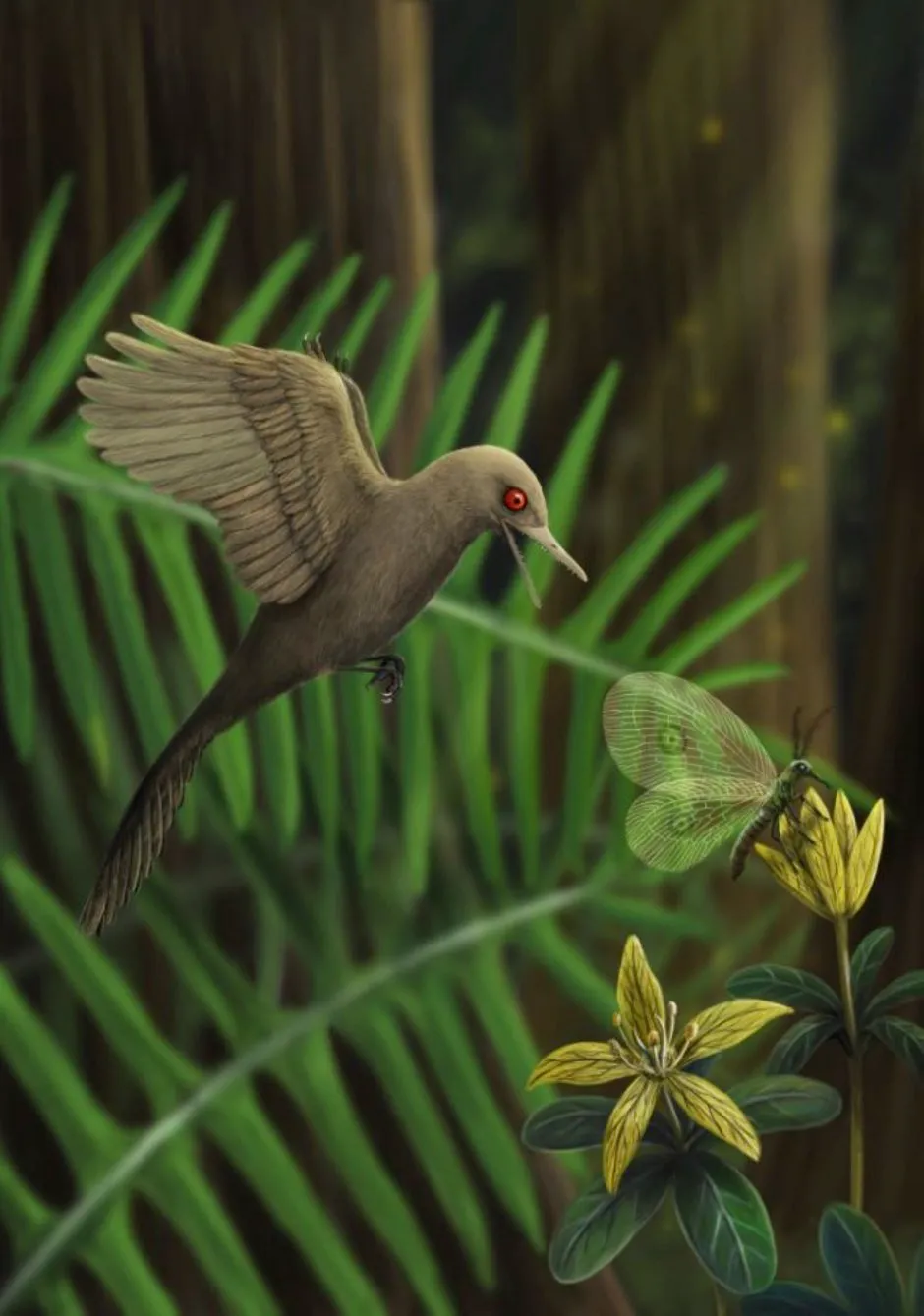- The skull of a new species of tiny, bird-like dinosaur has been discovered trapped in amber.
- Oculudentavis khaungraae would have been about the same size as the bee hummingbird, the smallest living bird.
- Its large eyes and the number of teeth suggest it was a predator that hunted in the daytime, potentially eating small insects.
Scientists have discovered a new species of bird-like dinosaur from a skull trapped in amber.The new species may represent the smallest Mesozoic dinosaur reported to date, they say.
Researchers describe a tiny, bird-like skull discovered in approximately 99-million-year-old amber from northern Myanmar. The specimen is extraordinarily well preserved, even retaining some soft tissue.
Read more about dinosaurs:
- Prehistoric lice dined on feathered dinosaurs as long as 100 million years ago
- Dinosaurs: now in colour
- How brains, not brawn, helped the Tyrannosaur become king
According to the findings published in the Nature journal, the skull of the specimen is only 7.1 mm in length, indicating the dinosaur was similar in size to the bee hummingbird – the smallest living bird.
Lars Schmitz, associate professor of biology at the W M Keck Science Department in the US, said: “Amber preservation of vertebrates is rare, and this provides us a window into the world of dinosaurs at the lowest end of the body-size spectrum. Its unique anatomical features point to one of the smallest and most ancient birds ever found.”

Researchers have named the animal Oculudentavis khaungraae.Oculudentavis means “eye tooth bird”, reflecting notable features that give insights into the animal’s lifestyle.
Its skull is dominated by a large eye socket that is similar to a lizard’s eye.The eye socket has a narrow opening and only lets in a small amount of light. Researchers say this suggests it was suited to being active in daylight conditions.
The lower and upper jaws had a large number of sharp teeth, and the authors estimate each jaw would have had 29–30 teeth in total.Despite its small size, this suggests the dinosaur was a predator and probably fed on small arthropods or invertebrates.
Prof Schmitz said: “No other group of living birds features species with similarly small crania in adults. This discovery shows us that we have only a small glimpse of what tiny vertebrates looked like in the age of the dinosaurs.”
Reader Q&A: What would dinosaurs have tasted like?
Asked by: Peter Makepeace, Northamptonshire
Dinosaurs probably would have tasted like chicken. Okay, so everybody always says that everything tastes like chicken. But I’m not being facetious. Birds evolved from dinosaurs, which means that they’re essentially modern-day dinosaurs.
Of course, not all birds taste like chicken, though. So maybe some dinosaurs would have tasted like duck or turkey or game birds, depending on the dinosaur’s diet and fat content. Plant-eating dinosaurs such as Triceratops and Diplodocus probably would have been tastiest.
The animal fat in the diet of carnivorous dinosaurs such as Tyrannosaurus rex and Velociraptor would have given them an overly ‘gamey’ flavour (one of the reasons we eat cows but not wolves).
Read more: